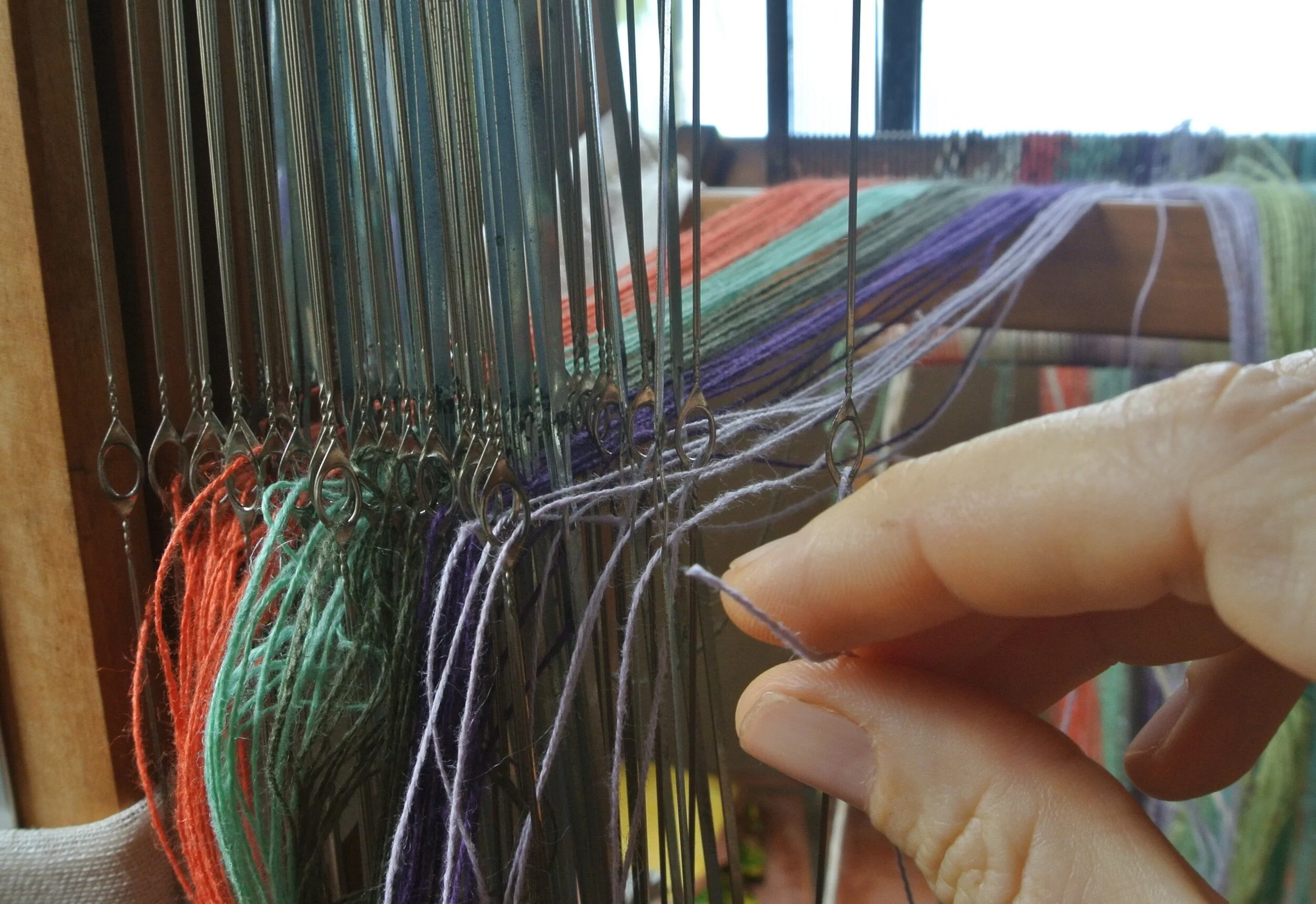The Weaving Process
Weaving involves many steps. Here is a basic walkthrough of what is involved to help you have a better understanding of the time and effort required to make these fabrics.
My design process often begins with flashes of inspiration that happen when I’m in nature, meditating or even dreaming. Often I feel like I’m “given a download” of a weaving that “steeps” in my mind for weeks or months before I actually begin actively designing the piece. Then I enter a very focused phase of designing the weaving with the aid of a computer software program, as well as on paper. This process involves a lot of numbers and calculations, in addition to the more free flowing creativity of the overall look and feel of the piece. Then I begin measuring and winding the yarn that will be used, which also involves a lot of counting and attention to detail.
Hand dyeing the yarn is the place where I revel in having more spontaneity and improvisation. Artistically, it is very important to me to have this space of dancing with inspiration and color in a more fluid way. I hand paint my warps using a sponge or paintbrush and it allows me to have a creative expression outside of the normal rigid grid structure of the loom. It is here that the careful planning and calculations meet and merge with the mystery and surprise of the creative muse. A creative conversation takes place between the materials, colors, feeling, and my original design idea that usually evolves the piece from it’s original concept in a way I consider to be Divine Guidance.
Once the yarn is dyed and ready it’s time to begin the dance with the loom. The loom I most often work on is an 8 shaft floor loom, which was a wedding gift from my husband and one of my most cherished possessions. The yarn is wound onto the loom under tension and each thread goes one at a time into an assigned place. Any errors in this process will affect the design and must be corrected. This part of the process can be very time consuming and tedious.
Finally after all that the weaving can begin. It is always a magical and satisfying moment to see the design emerge after so many hours of meticulous and laborious planning. I love the physicality of working at the loom…it is an orchestrated dance involving the feet, the arms, the entire body in synchronized movements.
Once the weaving is finished, the fabric is cut off the loom and hand washed to set the fibers. Then it is hemmed or sewed into it’s final form.
So when people ask me “how long did that take to weave?”, it can be a very challenging question to answer. In some projects, the actual “weaving” time is very small compared to the total time spent on designing and setting up the loom. Many hours that are difficult to track go into all the little details, and the time spent actually sitting at the loom weaving is only one small part of the process.








